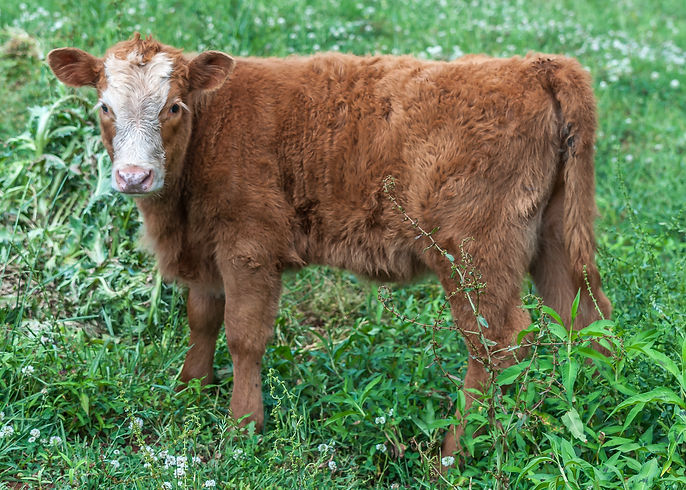
Igor
Crossbreeding

Benefits of Highland Genetics
Crossbreeding beef cattle offers two primary advantages: 1) crossbred animals exhibit heterosis (hybrid vigor), and 2) crossbred animals combine the strengths of the various breeds used to form the cross. Heterosis or hybrid vigor refers to the superiority in performance of the crossbred animal compared to the average of the straight bred parents. Numerous crossbreeding studies conducted in the Southeast and Midwest have shown an increase in calf livability coupled with an increase in growth rate. Maternal heterosis results in improvements in cow fertility, calf weaning weight and cow longevity.
Highland cattle are a perfect selection for crossbreeding. They are the hardiest of cattle with the highest food conversion factor. Crossing them with other breeds produces a faster growing and more commercial animal without losing the hardiness and low maintenance of the pure Highland. As Highlands have virtually untampered genetics since the 12th century, they are quite different from most other cattle. This provides maximum heterosis effect in crossbreeding.
Crossbreeding with a Highland bull on commercial cows virtually eliminate calving problems and increases calf survival with strong and healthy calves. This is particularly effective with first calf heifers. Crossbred calves will retain their familiar appearance. The horns are recessive and are not expressed when bred to a polled animal. Highland cross calves have increased vigor and hardiness, as well as natural disease resistance, forage ability, and high efficiency.
The Highland cow is well known for important traits like longevity and hardiness, often producing into her teens. She has superior maternal instincts and milking ability to raise a healthy calf. Highlands are good convertors of poor quality roughages and excellent foragers to take advantage of the grazing/feed resources available in your program. Cross calves have the longer eyelashes and forelock like Highlands. Steers gain and grade well. Hanging weight percentages of 60 to 65 % are not uncommon, with ample marbling and no wasted back fat. Crossbred steers can be finished on grass or in feedlots. Highland cross heifers make ideal commercial brood cows of medium size. Economical to feed and handle, they calve with no assistance, have high butterfat milk to feed a large calf to full potential and have long productive lives.
John Lawson at the CDA Research Station , Lethbridge, Alberta has shown that Highland - Hereford cross steer calves exceed the Hereford in growth rate and equalled them in carcass characteristics. The cross cows were hardy, excellent mothers and had high conception rates, ranking among the best of all breeds and crosses produced in the study.
Highland x Wagyu




Highland x Hereford






Mother is an F1 Cross, the calf, an F2



Sold
Highpoint Highlands



